Best Beer Taste – The Art of Beer Tasting: An Introduction to Beer Flavor Profiles
Understanding the Basics: Different Types of Beer and their Characteristics
When it comes to beer tasting, it’s important to have a basic understanding of the different types of beer and their characteristics. Here are some popular beer styles and their defining features:
- Ales: Ales are fermented at warmer temperatures, resulting in a wide range of flavors and aromas. They can be fruity, spicy, bitter, or have a malty sweetness.
- Lagers: Lagers are fermented at colder temperatures and usually have a clean, crisp taste. They can range from light and refreshing to malty and full-bodied.
- IPAs: IPAs, or India Pale Ales, are known for their strong hop flavors and bitterness. They can have piney, citrusy, or floral aromas, and are often bold and refreshing.
- Stouts and Porters: Stouts and porters are dark, rich, and often have flavors of chocolate, coffee, and roasted malt. They can be creamy and full-bodied, with a slightly bitter finish.
- Wheat Beers: Wheat beers are made with a significant proportion of wheat, which gives them a light, refreshing character. They often have fruity and citrusy flavors, with a hint of spice.
The Importance of Beer Aroma and Appearance in Tasting
When it comes to beer tasting, the appearance and aroma of the beer play a crucial role in enhancing the overall experience. Here’s why:
Appearance:
- The color of the beer can provide clues about its flavor. Darker beers often have richer, maltier flavors, while lighter beers can be crisp and refreshing.
- The clarity of the beer can indicate its quality and filtering process. A hazy beer may have more flavor compounds, while a clear beer can have a more refined taste.
Aroma:
- The aroma of beer is an essential part of the tasting experience. It can provide insights into the beer’s ingredients and brewing process.
- Aromas can range from fruity and floral to malty and earthy, depending on the beer style.
- Aromas can also give hints about the beer’s flavor profile, helping you anticipate what to expect when taking a sip.
By paying attention to the appearance and aroma of the beer, you can enhance your appreciation and understanding of its flavor profile. Next time you have a beer in hand, take a moment to observe its color and inhale its enticing aromas before taking that first sip.
Beer Tasting Techniques: How to Assess and Appreciate Beer Flavor
Evaluating Taste: Identifying Sweet, Bitter, Sour, and Malty Notes
To fully appreciate the flavor of beer, it is important to be able to identify and evaluate the different taste components. Here are some key taste profiles to look out for:
- Sweet: Sweet notes in beer can come from the malt used in the brewing process. It can provide a rich and caramel-like flavor.
- Bitter: Bitterness in beer primarily comes from hops. Hops can add flavors ranging from floral and citrusy to piney and resinous. Bitterness helps to balance out the sweetness of the malt.
- Sour: Some beer styles, such as sour ales, are intentionally brewed to have a tart and acidic flavor. These beers often have citrus or fruity notes.
- Malty: Malty flavors are derived from the grains used in the brewing process. They can range from a biscuity or toasty flavor to a more caramel-like sweetness.
To evaluate taste, take small sips of beer and let it coat your entire mouth. Focus on detecting these taste profiles and noting their intensity. This will help you develop a better understanding of the beer’s flavor profile and how different elements interact.
Mastering the Finish: Recognizing Aftertaste and Mouthfeel
The finish of a beer refers to its aftertaste and mouthfeel. Here are some aspects to consider when evaluating the finish:
- Aftertaste: After you swallow the beer, pay attention to the lingering flavors left on your palate. Does the flavor change or intensify? Is it pleasant or overpowering? Taking note of the aftertaste can help you understand the complexity and balance of a beer.
- Mouthfeel: Mouthfeel refers to the texture and body of the beer. It can be light and refreshing or thick and full-bodied. Consider the carbonation level, viscosity, and overall sensation in your mouth while drinking the beer.
By paying attention to the taste and finish of a beer, you can develop a deeper appreciation for its flavor and better understand its characteristics. The goal is to become more attuned to the nuances of beer and improve your skills as a taster, judge, and brewer.
Remember, practice makes perfect. So, the next time you have a beer in hand, take the time to assess its taste and finish. With each evaluation, you will enhance your sensory skills and broaden your understanding of the wonderful world of beer.
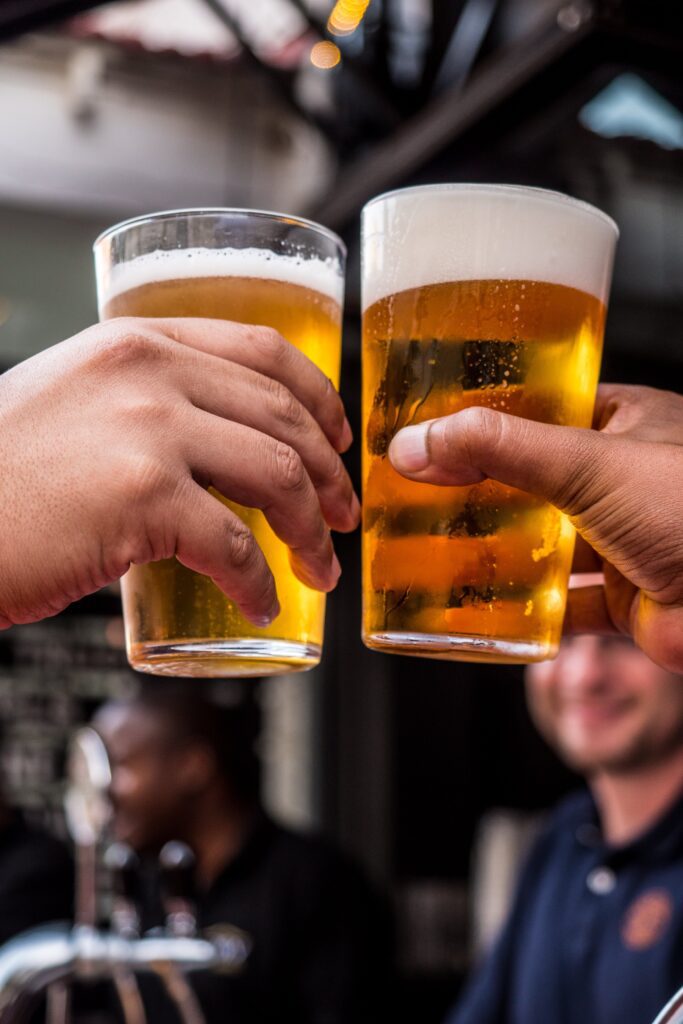
Traditional Beer Styles: Exploring Time-Honored Flavors
Evaluating Taste: Identifying Sweet, Bitter, Sour, and Malty Notes
To fully appreciate the flavor of beer, it is important to be able to identify and evaluate the different taste components. Here are some key taste profiles to look out for:
- Sweet: Sweet notes in beer can come from the malt used in the brewing process. It can provide a rich and caramel-like flavor.
- Bitter: Bitterness in beer primarily comes from hops. Hops can add flavors ranging from floral and citrusy to piney and resinous. Bitterness helps to balance out the sweetness of the malt.
- Sour: Some beer styles, such as sour ales, are intentionally brewed to have a tart and acidic flavor. These beers often have citrus or fruity notes.
- Malty: Malty flavors are derived from the grains used in the brewing process. They can range from a biscuity or toasty flavor to a more caramel-like sweetness.
To evaluate taste, take small sips of beer and let it coat your entire mouth. Focus on detecting these taste profiles and noting their intensity. This will help you develop a better understanding of the beer’s flavor profile and how different elements interact.
Mastering the Finish: Recognizing Aftertaste and Mouthfeel
The finish of a beer refers to its aftertaste and mouthfeel. Here are some aspects to consider when evaluating the finish:
- Aftertaste: After you swallow the beer, pay attention to the lingering flavors left on your palate. Does the flavor change or intensify? Is it pleasant or overpowering? Taking note of the aftertaste can help you understand the complexity and balance of a beer.
- Mouthfeel: Mouthfeel refers to the texture and body of the beer. It can be light and refreshing or thick and full-bodied. Consider the carbonation level, viscosity, and overall sensation in your mouth while drinking the beer.
By paying attention to the taste and finish of a beer, you can develop a deeper appreciation for its flavor and better understand its characteristics. The goal is to become more attuned to the nuances of beer and improve your skills as a taster, judge, and brewer.
Remember, practice makes perfect. So, the next time you have a beer in hand, take the time to assess its taste and finish. With each evaluation, you will enhance your sensory skills and broaden your understanding of the wonderful world of beer.
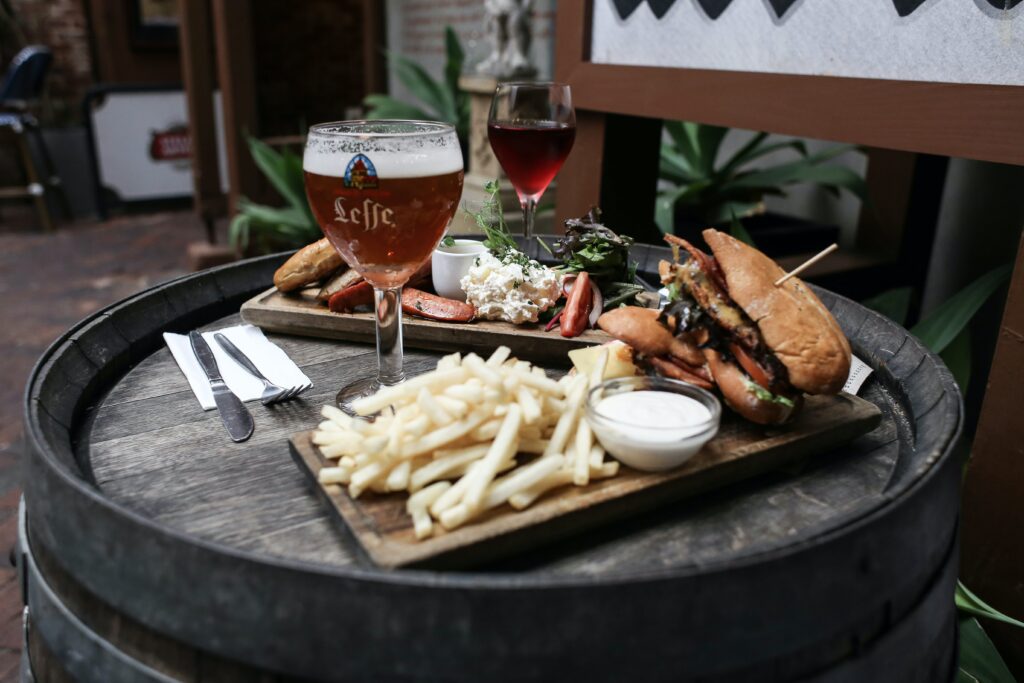
Craft Beer Revolution: Discovering Flavors from Innovative Brewers
American IPAs: Hoppy Delights and Floral Aromas
American IPAs (India Pale Ales) are a popular craft beer style known for their hop-forward flavor profiles. They often have intense hop bitterness and strong hop aromas. Here are some key characteristics of American IPAs:
- Hoppy Flavor: American IPAs are all about the hops. They can range from citrusy and piney to tropical and fruity. The hops provide a strong bitterness that balances out the malty sweetness.
- Floral Aromas: American IPAs are known for their aromatic hop presence. In addition to the bitter flavors, they often have floral and herbal aromas that add complexity to the beer.
- Higher ABV: American IPAs usually have a higher alcohol by volume (ABV) compared to other beer styles. This higher alcohol content adds to the overall intensity and complexity of the beer.
Sour Beer Sensation: Exploring Tart and Funky Brews
Sour beers have gained popularity in recent years, offering a unique and refreshing taste experience. These beers are intentionally brewed to have a tart and acidic flavor. Here are some key characteristics of sour beers:
- Tart and Acidity: Sour beers have a distinct sourness that can range from mild to puckeringly tart. This tartness comes from the use of specific yeast strains or the addition of bacteria during the brewing process.
- Funky and Complex: In addition to the sourness, sour beers can have funky and complex flavors. Some may exhibit notes of barnyard, hay, or even tropical fruits. These flavors develop through fermentation and aging processes.
- Fruit Infusions: Many sour beers are also brewed with fruit infusions, adding a layer of sweetness and fruitiness to balance out the acidity. Common fruit additions include cherries, raspberries, and peaches.
Craft beer styles offer an exciting variety of flavors and experiences for beer enthusiasts to explore. Whether you’re a fan of hoppy IPAs or enjoy the tartness of sour beers, there’s a craft beer style out there that will tickle your taste buds and expand your palate. So, next time you’re at a brewery or beer shop, be adventurous and try something new. Who knows, you might discover a new favorite beer style along the way. Cheers!
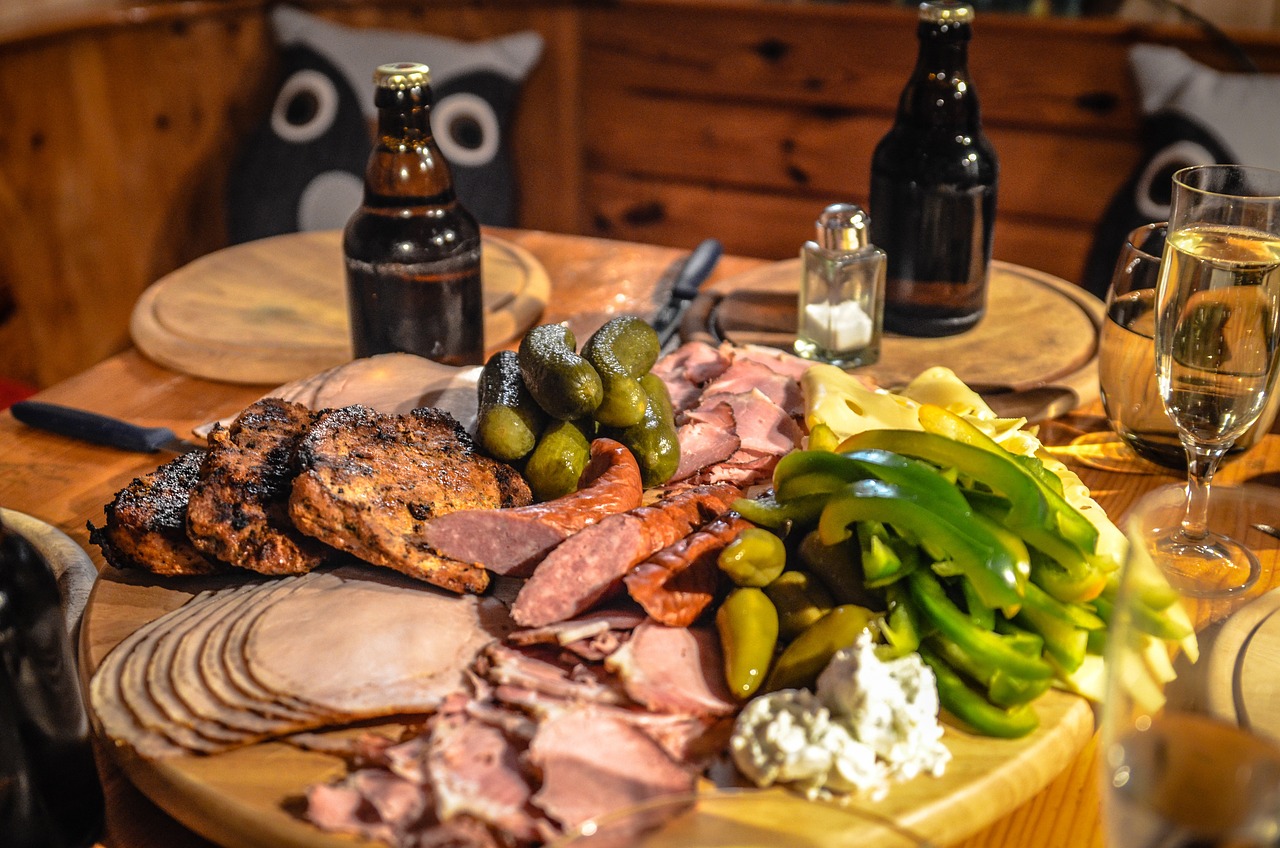
International Delights: Unique Beer Flavors from Around the Globe
German Hefeweizens: Spicy Banana and Clove Infusions
German Hefeweizens are a popular beer style known for their unique flavor combination of spicy banana and clove. Here are some key characteristics of German Hefeweizens:
- Distinctive Aromas: German Hefeweizens have a distinct aroma profile, with prominent notes of banana and clove. These aromas come from the specific yeast used in the fermentation process.
- Light and Refreshing: Hefeweizens are typically light and refreshing beers, perfect for warm weather or a summer day. They have a smooth mouthfeel and lower bitterness compared to other beer styles.
- Cloudy Appearance: One unique feature of German Hefeweizens is their cloudy appearance. This is due to the presence of yeast and proteins in the beer, giving it a hazy and unfiltered look.
Mexican Cervezas: Crisp Lagers with Lime and Salt
Mexican Cervezas, particularly the lager style, offer a crisp and refreshing taste with the addition of lime and salt. Here are some key characteristics of Mexican Cervezas:
- Light and Crisp: Mexican lagers are known for their light and crisp profile, making them easy-drinking beers. They are often enjoyed with a slice of lime to enhance the refreshing flavor.
- Lime and Salt Infusions: Many Mexican Cervezas are served with a lime wedge and a salted rim. The combination of lime and salt adds a tangy and savory element to the beer, making it even more enjoyable.
- Pairing with Mexican Cuisine: Mexican Cervezas are a perfect accompaniment to Mexican cuisine, particularly spicy dishes. The lightness of the beer and the citrus notes from the lime help to balance out the spiciness of the food.
In conclusion, both German Hefeweizens and Mexican Cervezas offer unique and flavorful experiences for beer enthusiasts. Whether you’re in the mood for the spicy banana and clove-infused Hefeweizen or the crisp and tangy Mexican Lager, there’s an international beer flavor out there to satisfy your taste buds. So next time you’re looking for a taste of something different, give these international beer styles a try. Cheers!
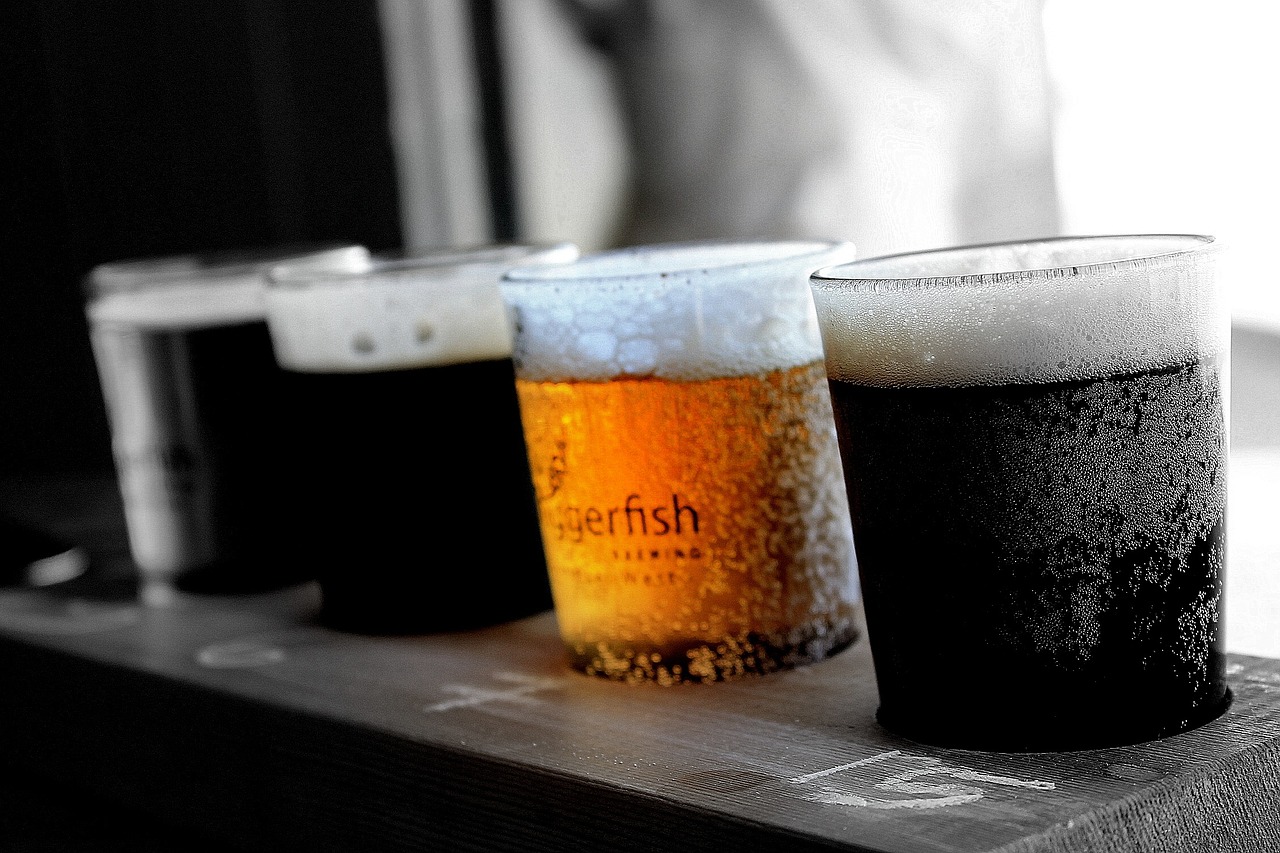
Barrel-Aged Beers: Complexities from Aging in Wood
Whiskey Barrel Aged: Infusing Boozy, Smoky, and Caramel Notes
Barrel-aging beer in whiskey barrels adds a whole new layer of complexity and flavor to the brew. Here are some key characteristics of whiskey barrel-aged beers:
- Boozy Flavors: The interaction of the beer with the whiskey-soaked wood imparts strong boozy flavors. These can range from subtle hints to a more pronounced alcohol presence, depending on the length of aging.
- Smoky Undertones: The charring of the whiskey barrels during their production can introduce smoky flavors into the beer. This adds depth and complexity to the overall taste profile.
- Caramel Infusions: The oak barrels used for aging whiskey often have caramel residue from previous aging processes. This can transfer to the beer, giving it a sweet and rich caramel character.
Wine Barrel Aged: Exhibiting Fruity and Vinous Characters
Aging beer in wine barrels offers a unique experience by imparting fruity and vinous characteristics to the brew. Here are some key characteristics of wine barrel-aged beers:
- Fruity Flavors: The wine remnants left in the barrels infuse the beer with fruity flavors. These can range from berry notes to tropical fruits, depending on the type of wine and the length of aging.
- Vinous Undertones: The beer picks up the qualities of the wine, resulting in a vinous character. This can add complexity and sophistication to the overall taste profile.
- Tannin Influence: The oak barrels used for wine aging contain tannins, which are extracted by the beer during the aging process. Tannins contribute to a dry mouthfeel and can enhance the beer’s structure and longevity.
In conclusion, barrel-aged beers offer a world of flavors and experiences that go beyond traditional brewing methods. Whether it’s the boozy, smoky, and caramel notes of whiskey barrel-aged beers or the fruity and vinous characters of wine barrel-aged beers, these indulgent treats showcase the artistry and dedication of passionate brewers. So, why not explore the complexities of barrel-aged beers and expand your beer horizons? Cheers!
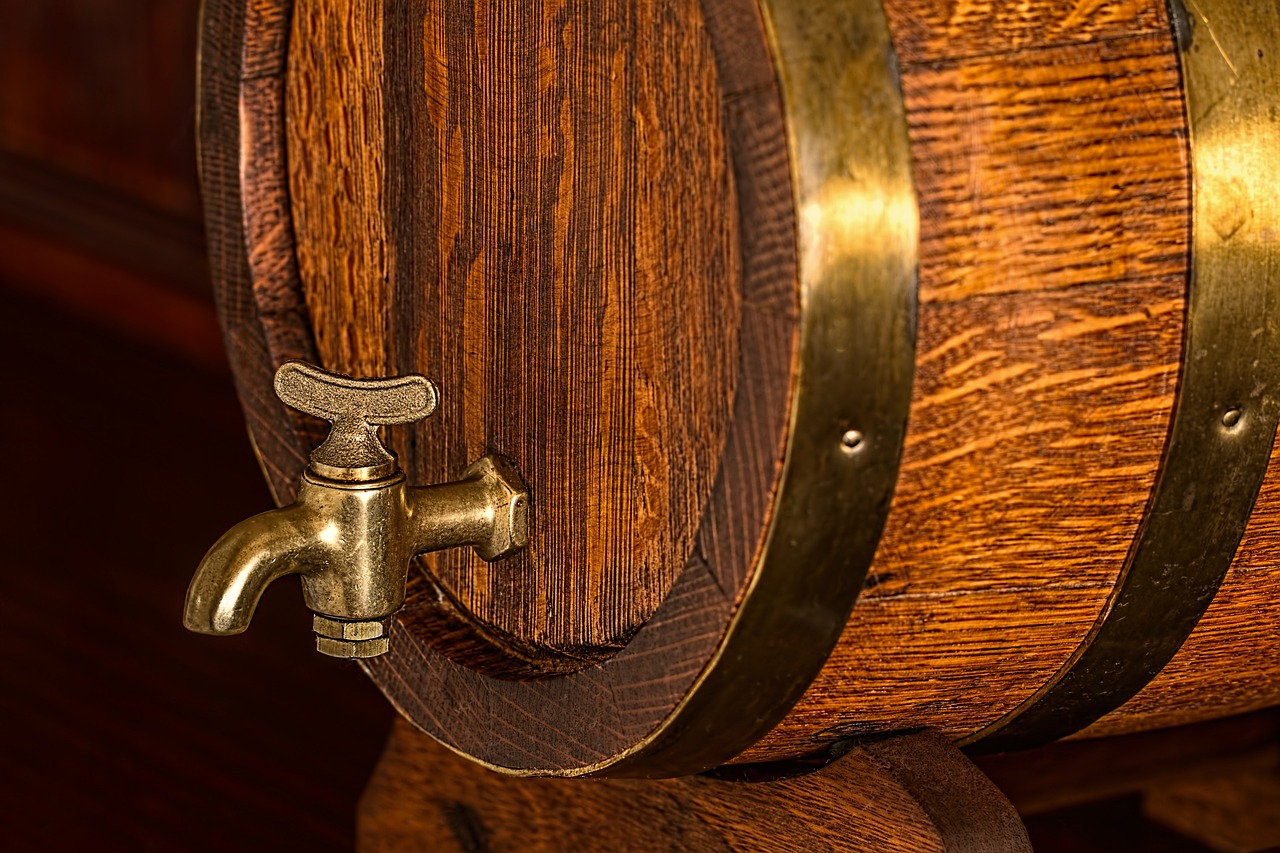
Unconventional Ingredients: Beers with Surprising Flavors
Chocolate Infused Brews: Decadent Dessert in Every Sip
Infusing beer with chocolate takes the indulgence to a whole new level. Here are some key characteristics of chocolate-infused beers:
- Decadent Flavors: The addition of chocolate to the brewing process results in rich and creamy flavors that mimic the taste of your favorite desserts.
- Smooth Texture: The velvety smoothness of chocolate adds to the overall mouthfeel of the beer, creating a luscious and satisfying drinking experience.
- Complexity and Balance: Chocolate-infused beers often exhibit a perfect balance between sweetness and bitterness, creating a harmonious blend of flavors.
Spiced and Herbal Beers: Adding Depth with Ingredients like Chili and Herbs
Beers with unconventional ingredients like chili peppers and herbs offer a unique and exciting flavor profile. Here are some key characteristics of spiced and herbal beers:
- Heat and Spice: Adding chili peppers to the brewing process can create a spicy kick that complements the beer’s flavors. The level of heat can vary, from subtle warmth to intense fire.
- Herbal Complexity: The infusion of herbs adds layers of complexity to the beer, introducing aromatic and earthy notes that enhance the overall taste experience.
- Unexpected Combinations: Spiced and herbal beers often push the boundaries of traditional brewing, resulting in unique flavor combinations that surprise and delight the palate.
These unconventional ingredients bring a world of flavors to the craft beer scene, allowing brewers to experiment and create truly innovative brews. Whether it’s the decadent dessert-like qualities of chocolate-infused beers or the added depth and complexity of spiced and herbal beers, these unconventional brews are sure to delight beer enthusiasts looking for something out of the ordinary. So, why not expand your beer horizons and indulge in the surprising flavors of these unique brews? Cheers!
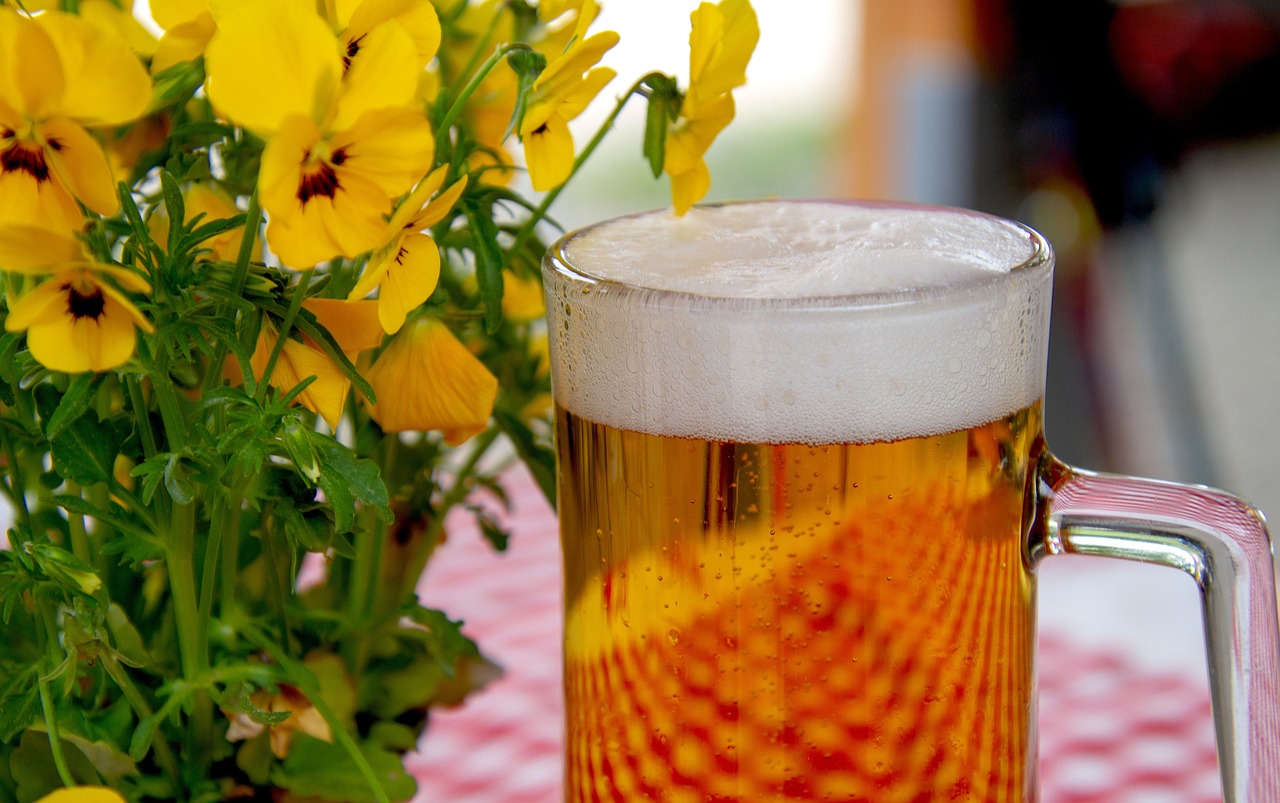
Recommendations: Must-Try Beers for an Unforgettable Taste
Top Picks for Hop Lovers: Bursting with Citrus and Pine Aromas
For the hop enthusiasts out there, these beers are packed with intense hop flavors and aromas that will tantalize your taste buds. Here are our top picks for hop lovers:
- IPA (India Pale Ale): Known for their strong hop bitterness and citrusy hop flavors, IPAs are a favorite among craft beer enthusiasts. Look for West Coast IPAs for a bold and resinous hop profile, or New England IPAs for a hazy and juicy hop experience.
- Pale Ale: A lighter alternative to IPAs, pale ales still offer a good dose of hop character but with a more balanced flavor profile. Expect notes of citrus, pine, and floral hops in this refreshing beer.
- American Amber Ale: This style showcases a balance between malt sweetness and hop bitterness. With a rich amber color and a blend of caramel and citrusy hop flavors, American amber ales are a great choice for those who enjoy a well-rounded beer.
Unique and Rare Finds: Limited Edition Beers with Distinctive Flavors
If you’re looking for something truly special, these limited edition beers are sure to impress with their unique flavors and brewing techniques.
- Barrel-Aged Beers: These beers are aged in oak barrels, which imparts distinct flavors such as vanilla, caramel, and oak. Look for barrel-aged stouts or barleywines for a rich and complex drinking experience.
- Sour Beers: Sour beers are brewed with wild yeast or bacteria, resulting in tart and acidic flavors. Try a fruit-infused sour beer for an added burst of fruity goodness.
- Imperial Stouts: These dark and robust beers are known for their high alcohol content and rich, malty flavors. Look for barrel-aged imperial stouts for an even more decadent experience.
With their unique flavors and brewing techniques, these must-try beers are sure to leave a lasting impression. Whether you’re a hop lover or looking for something out of the ordinary, these beers offer an unforgettable taste experience. So grab a glass and embark on a journey through the world of craft beer!
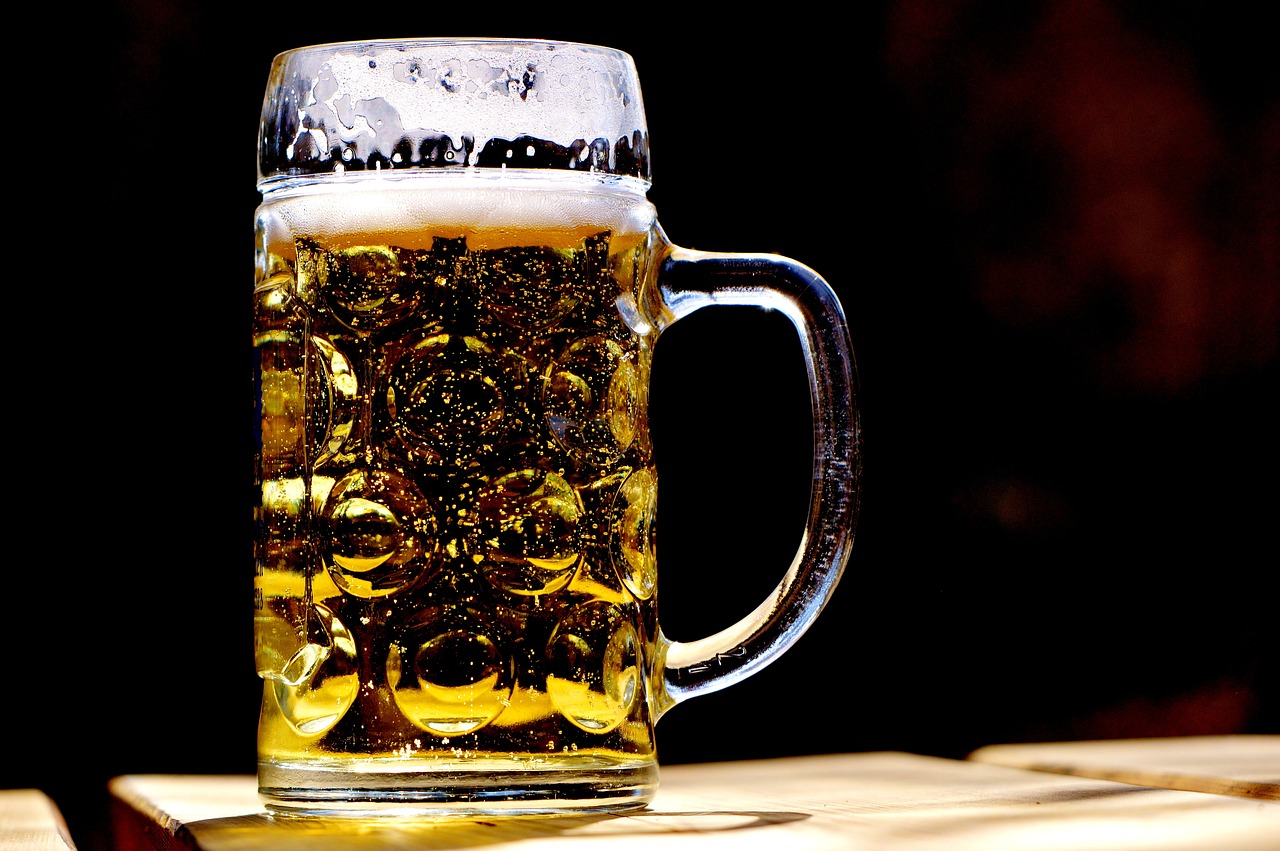
Conclusion
The Pleasure of Beer Tasting: A Journey of Flavors
Beer tasting is not just about drinking beer; it is an immersive experience that allows you to explore a wide range of flavors, aromas, and textures. It is a celebration of the artistry and craftsmanship behind every pint. Whether you are a beer aficionado or new to the world of craft beer, beer tasting offers a captivating journey that goes beyond mere consumption.
During a beer tasting, you get the opportunity to appreciate the intricate combination of ingredients and brewing techniques that result in unique and distinctive flavors. From hop-forward IPAs bursting with citrus and pine aromas to barrel-aged stouts with notes of vanilla and caramel, there is a beer out there for every palate. Beer tasting allows you to expand your horizons and discover new favorites.
Tips for Enhancing Your Beer Tasting Experience
To fully optimize your beer tasting experience, here are some tips to keep in mind:
- Pick the Right Beer for YOU: Choose beers that align with your preferences and tastes. Experiment with different styles and flavors to find your favorites.
- Choose the Right Glass: Use the appropriate glassware for the beer you are tasting. Each glass shape is designed to enhance specific characteristics and aromas.
- Pair Your Beer with Good Food: Food can complement and enhance the flavors of the beer. Experiment with different food pairings to create delightful taste combinations.
- Skip the Frosted Glass: Frosted glasses can numb your taste buds and mask the true flavors of the beer. Opt for a clean, non-frosted glass instead.
- Perfect the Pour: Pour your beer correctly to maximize aroma and create a proper head. This will release the beer’s full potential.
- Dive into the Initial Smell and Taste: Take the time to smell and taste the beer, paying attention to the aromas, flavors, and mouthfeel. Allow yourself to fully immerse in the experience.
- Don’t Drink Beer Ice Cold: Extremely cold temperatures can dull the flavors of the beer. Let your beer warm up slightly to allow the flavors to shine.
- Don’t Leave Beer in the Sun: UV light can react with the compounds in beer and produce unpleasant flavors. Store and transport your beer in a cool and dark place.
By following these tips, you can enhance your beer tasting experience and fully appreciate the flavors and complexities that craft beer has to offer.
So, grab a glass and embark on an enchanting journey through the world of beer tasting. Cheers!
Frequently Asked Questions – Best Beer Taste: Exploring the World of Beers for Superior Flavor
Q: What is the secret to finding the best beer taste?
A: The secret lies in exploring the vast world of beers and discovering the ones that suit your preferences. There are different styles, brewing methods, and ingredients that contribute to the unique flavors of beers.
Q: How can I improve my beer tasting skills?
A: Improving your beer tasting skills involves techniques such as smelling, observing, and savoring the flavors. Assessing the appearance, aroma, taste, and mouthfeel of different beers will help you identify the nuances and complexities of their flavors.
Q: Are certain beers better suited for specific types of food?
A: Absolutely! Beer and food pairing is an exciting aspect of enjoying beer. Different styles of beer can complement or contrast with different types of food, enhancing the overall dining experience. Experimenting with pairings will help you find the perfect match for your palate.
Q: Are there any particular beer styles known for their superior flavor?
A: Beer styles like IPAs (India Pale Ales), Stouts, Sours, and Belgian Ales are often celebrated for their bold and complex flavors. However, taste is subjective, and what might be perfect for one person may not be the same for another. Exploring various beer styles is the key to finding your personal favorites.
Q: Can beer tasting be a social activity?
A: Absolutely! Beer tasting can be a delightful social activity. Gathering with friends or joining beer tasting events allows you to share your impressions and thoughts on different beers. It’s a great opportunity to learn from others and discover new flavors together.
Q: Can I develop a preference for a specific beer taste over time?
A: Yes, your taste preferences can evolve and change over time. Just like with any other beverage or food, your palate develops as you try different flavors. Being open-minded and willing to explore new beer styles will help you refine your preferences and discover new favorites.
Q: Are there any resources to learn more about beer tasting and flavor profiles?
A: Yes! There are many resources available, including books, online courses, beer tasting events, and websites dedicated to beer enthusiasts. These resources can provide valuable information on beer styles, flavor profiles, and tips for enhancing your beer tasting experience.
Q: How can I find the best beer establishments or breweries to explore superior flavors?
A: You can start by researching local breweries and brewpubs in your area. Reading online reviews and recommendations can help you gauge the quality and variety of beers offered. Additionally, attending beer festivals and seeking recommendations from fellow beer enthusiasts can lead you to new and exciting beer experiences.
In summary, the best beer taste is subjective and personal. By exploring different styles, improving your beer tasting skills, and embracing the social aspect of beer, you can embark on an enjoyable journey to discover beers with superior flavor. Cheers!

We are introducing Alberto Wilson, the content owner at South Avenue Bar! 🍹🍻Join us at South Avenue Bar, a modern establishment boasting an impressive cocktail menu and a vibrant atmosphere. For those who prefer a classic brew, we also offer a delightful selection of draft beers, poured just right to ensure a perfect pint every time.
Immerse yourself in the rhythms of Latin music during our weekly Latino night, where you can sip on refreshing margaritas and mojitos while enjoying the vibrant beats. Indulge in our delectable Greek tapas, featuring mouthwatering olives and other delightful small bites that perfectly complement your drink of choice.
Whether you’re seeking an exquisite cocktail experience or a laid-back evening with your favorite beer, South Avenue Bar, under the guidance of Alberto Wilson, promises a memorable and delicious journey through the world of libations. Come and join us today! 🍸🎉
